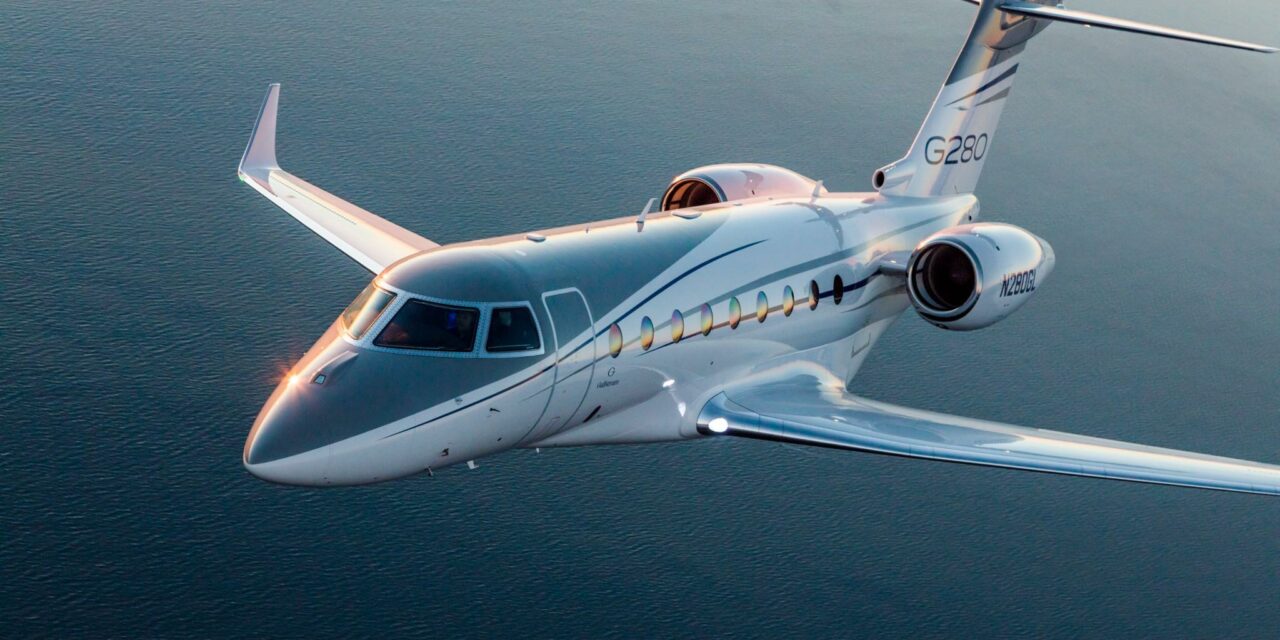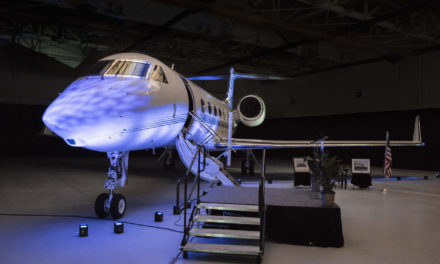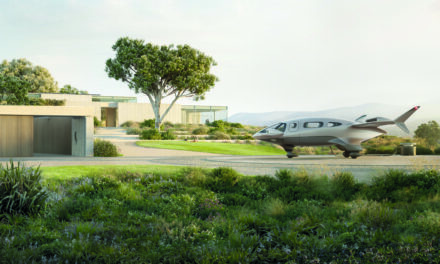Gulfstream Aerospace announced that it is continuing to invest in its super-midsize Gulfstream G280 with the addition of an even lower cabin altitude and new LED exterior lights. The new enhancements follow a record sales year and exemplify Gulfstream’s ongoing commitment to the G280.
“The G280 continues to set the standard for the super-midsize class and we are seeing outstanding levels of interest from customers around the world,” said Mark Burns, president, Gulfstream. “This past year marked a record sales year for the G280, validating that our continued investment has been well-received.”
Ongoing research and development coupled with excellence in interior outfitting has allowed Gulfstream to introduce an even lower cabin altitude for the G280, reducing it from 6,000 feet/1,829 meters to 4,800 ft/1,463 m at a 41,000-ft/12,497-m cruising altitude. The new lower cabin altitude means less strain on the body, leaving customers even more relaxed and refreshed when they reach their destination.
The G280’s new exterior LED lights bolster aircraft safety through increased visibility in flight and during ground operations.
The improved cabin altitude and LED lights will be available on new G280s mid-2023 and for existing customers as an optional retrofit.
In the past year alone, Gulfstream has added a host of new G280 features that enhance the passenger experience and increase safety while streamlining pilot workload:
- • G280 aircraft can now be equipped with Gulfstream’s plasma ionization clean air system, proven in lab tests to neutralize pathogens and allergens
- • Controller-Pilot Datalink Communication (CPDLC) is now FANS-E compliant
- • Increased vertical separation minimum validation intervals from 24 to 96 months to reduce aircraft downtime
And for customers who choose the Gulfstream G280 avionics upgrade V3.6.1:
- • SiriusXM graphical weather with real-time updates
- • Dual electronic charts to help create a paperless flight deck and reduce pilot workload, further enhancing safety
- • Surface management system (SMS), which provides aural and visual cues to alert pilots to unsafe ground and arrival operations and helps prevent runway incursions
- • Access to vertical weather and predictive windshear information, allowing pilots ample time to avoid weather issues in flight.









